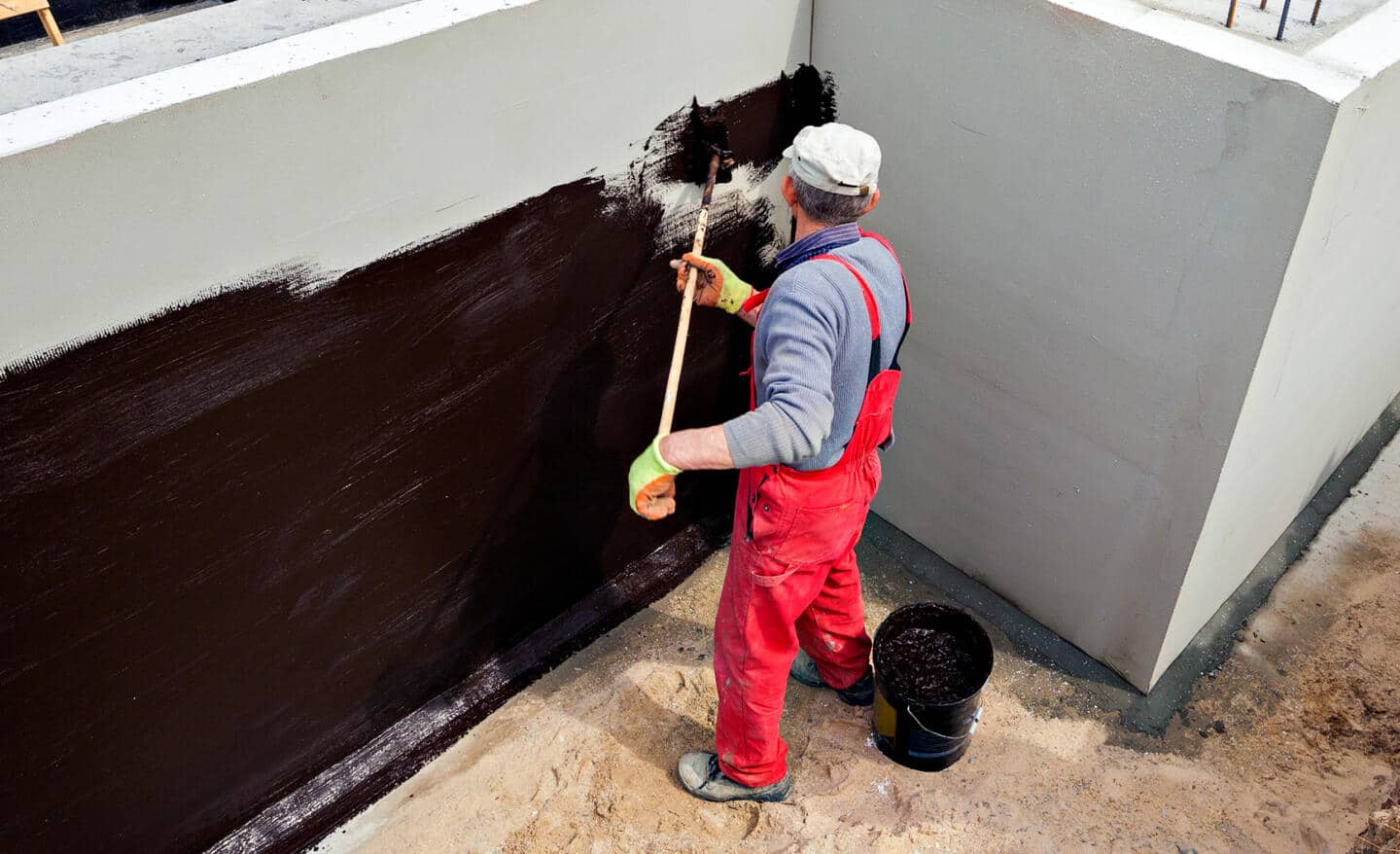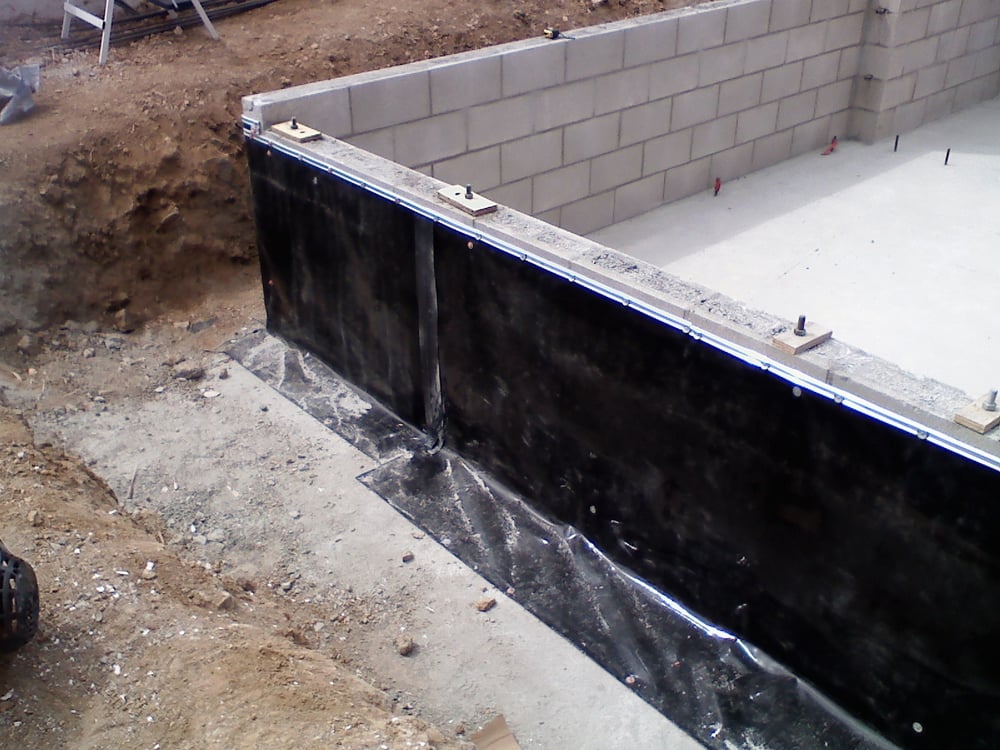Drainage & waterproofing company Omaha: Questions to Ask Before Hiring
Exactly How Waterproofing Works: A Detailed Consider Techniques and Technologies
Waterproofing is necessary for securing structures from moisture-related damages. It includes numerous strategies and modern technologies that create obstacles versus water invasion. Conventional techniques, such as compacted clay, exist side-by-side with modern advancements like liquid-applied membranes. Comprehending the nuances of these strategies is crucial for reliable application. Nevertheless, the efficiency of any type of waterproofing service hinges not just on the techniques utilized yet likewise on recurring maintenance and assessment. What are the key variables that influence lasting efficiency?
Comprehending the Basics of Waterproofing
Waterproofing is an essential process that protects structures from water breach, which can cause significant damage in time. This method involves the application of numerous materials and strategies developed to produce an obstacle against wetness. The primary objective is to avoid water from passing through surfaces, which can create deterioration, mold and mildew growth, and architectural instability.Various variables affect the selection of waterproofing approach, consisting of the kind of framework, its location, and ecological conditions. Understanding the physics of water movement and the homes of various products is essential in picking an efficient waterproofing solution.Effective waterproofing not only safeguards buildings however also enhances their durability and honesty. Normally, it is incorporated right into the style stage of building to ensure detailed security. As understanding of water-related problems expands, the significance of comprehending waterproofing fundamentals ends up being increasingly clear to designers, home builders, and homeowner alike.
Traditional Waterproofing Approaches
Standard waterproofing approaches have actually been used for centuries, depending on reliable methods and materials to safeguard structures from water damages. One of the oldest techniques entails using clay, which, when compressed, develops an all-natural barrier versus moisture. In addition, bitumen, a sticky, black material stemmed from oil, has been employed for its water-resistant residential or commercial properties, typically related to roof coverings and foundations.Another technique entails the application of lime-based plasters, which supply a breathable layer that enables wetness to escape while preventing water ingress. Thatch roof, a conventional approach still seen in some cultures, offers exceptional waterproofing as a result of its securely loaded straw layers.Moreover, using rock and brick has actually projected, as these products are inherently immune to water when effectively installed. In general, standard waterproofing approaches stress the importance of choosing ideal materials and construction practices to improve durability versus water intrusion.
Modern Waterproofing Technologies
Advancements in contemporary waterproofing modern technologies have changed the method frameworks are protected from water damage. Innovative approaches such as liquid-applied membranes and advanced sealers have boosted the efficiency and versatility of waterproofing solutions. These technologies permit seamless application, minimizing the danger of leakages and guaranteeing thorough protection over complicated surfaces.Moreover, the combination of smart innovations, such as wetness sensing units and automated tracking systems, makes it possible for real-time analysis of waterproofing efficiency. This positive approach assists in prompt maintenance and lowers long-term repair costs.Additionally, advancements in spray-applied coverings use quick application and exceptional adhesion, adapting to different substrates while giving durable defense. Strategies like polymer-modified systems even more improve versatility and durability, making them appropriate for varied environments. Generally, modern-day waterproofing modern technologies not only reduce water intrusion yet also contribute to the durability and sustainability of frameworks, noting a significant change in the sector.
Materials Used in Waterproofing
The effectiveness of waterproofing solutions heavily depends on the materials used in their application. Various materials are employed to produce obstacles against water ingress, each with one-of-a-kind buildings matched for different settings. Typically made use of products include membranes, coverings, and sealants.Liquid-applied membranes, frequently made from polyurethane or acrylic, develop a seamless barrier that adjusts to intricate surfaces. Sheet membrane layers, usually constructed from rubber or polycarbonate, deal toughness and are suitable for larger areas. In addition, cementitious waterproofing products, made up of cementitious substances, give exceptional adhesion and flexibility.Sealants made from silicone or polyurethane are important for joints and joints, making certain complete defense. Additionally, sophisticated materials, such as geo-composite membrane layers, incorporate numerous functions, enhancing efficiency. Generally, the choice of waterproofing materials is vital in achieving lasting and efficient water resistance, customized to certain project requirements and environmental problems.
Common Applications of Waterproofing
Waterproofing plays a necessary function in various markets, making certain the durability and integrity of frameworks. Usual applications include household solutions that secure homes, business facilities that safeguards businesses, and industrial settings that require robust defense against moisture. Understanding these applications highlights the value of waterproofing in maintaining both safety and security and performance across various environments.
Residential Waterproofing Solutions
Several property owners encounter try this site challenges with dampness intrusion, making effective residential waterproofing services essential. Numerous techniques exist to address this concern, consisting of interior and outside waterproofing systems. Inside solutions often include the application of sealants and finishings to cellar walls, which assist avoid water seepage. Outside techniques typically consist of the installation of water drainage systems and waterproof membranes that draw away water away from the foundation.Additionally, house owners might consider sump pumps to eliminate water buildup and dehumidifiers to manage moisture levels. Proper grading and the use of rain gutters likewise play an essential duty in taking care of water circulation around the home. By applying these strategies, home owners can greatly reduce the danger of water damages and mold and mildew growth, ensuring a completely dry and risk-free living atmosphere.

Industrial Infrastructure Protection
Efficient waterproofing options play a crucial function in the protection of commercial infrastructure. Water Solutions. These strategies are necessary for securing structures, car park structures, and bridges from water damages, which can endanger structural stability and result in expensive repairs. Usual applications consist of the installation of membrane layers, finishes, and sealants that create barriers versus moisture infiltration. Areas such as basements, roof coverings, and outside walls are typically prioritized to ensure long life and sturdiness. Furthermore, waterproofing systems can boost power effectiveness by avoiding water-related problems that might lead to mold development and deterioration. By executing durable waterproofing procedures, homeowner can shield their investments and preserve functional performance, inevitably adding to the overall sustainability of business facilities
Industrial Applications Introduction
While different industries face unique difficulties, the need for trustworthy waterproofing solutions continues to be a constant in commercial applications. Industries such as production, building and construction, and power frequently come across atmospheres where moisture exposure can endanger architectural honesty and operational performance. In producing centers, waterproofing is vital for protecting machinery and products from water damages. In building and construction, it safeguards foundations and cellars against groundwater infiltration. The energy market counts on waterproofing for the defense of tools in hydroelectric plants and overseas frameworks. Additionally, food handling markets utilize waterproofing to guarantee health and conformity with security requirements. Overall, reliable waterproofing remedies are essential for improving resilience, security, and efficiency across numerous commercial setups.
Maintenance and Longevity of Waterproofing Solutions
Although waterproofing solutions are created to use long-lasting defense versus moisture intrusion, routine upkeep is important to ensure their performance and durability - Water Solutions. Regular examinations play a significant function in recognizing possible concerns such as fractures, peeling off, or indicators of water damages. Resolving these troubles quickly can avoid additional damage and pricey repairs.Additionally, cleaning up the surface area of waterproofed locations helps eliminate dirt and particles that might compromise the honesty of the waterproofing obstacle. It's also suggested to reapply safety finishings or sealants as suggested by suppliers to preserve perfect efficiency. Ecological elements, such as UV exterior waterproofing companies near me direct exposure and severe climate condition, can influence the life-span of waterproofing products, making routine evaluation essential
Often Asked Inquiries
Can Waterproofing Be Applied in Winter?
The question of using waterproofing in winter increases worries regarding attachment and curing. Numerous items may not my explanation execute at their best in reduced temperature levels, necessitating cautious option and factor to consider of specific standards for efficient application.
For How Long Does Waterproofing Normally Last?
The duration of waterproofing performance differs based upon products and environmental aspects. Normally, it can last from 5 to 10 years, yet normal maintenance and inspections are vital to guarantee peak efficiency and durability.
Is DIY Waterproofing Effective and Safe?
The effectiveness and safety and security of do it yourself waterproofing depend on various variables, including material top quality and application method. While some individuals attain sufficient results, others might come across problems that compromise long-lasting defense and structural honesty.
What Are the Indications of Failing Waterproofing?
Indicators of failing waterproofing include noticeable water spots, peeling off paint, mold growth, moldy odors, and moisture in wall surfaces or ceilings - Water Solutions Omaha. These signs recommend endangered barriers, requiring timely inspection and potential removal to avoid additional damages
How Do I Pick the Right Waterproofing Contractor?
